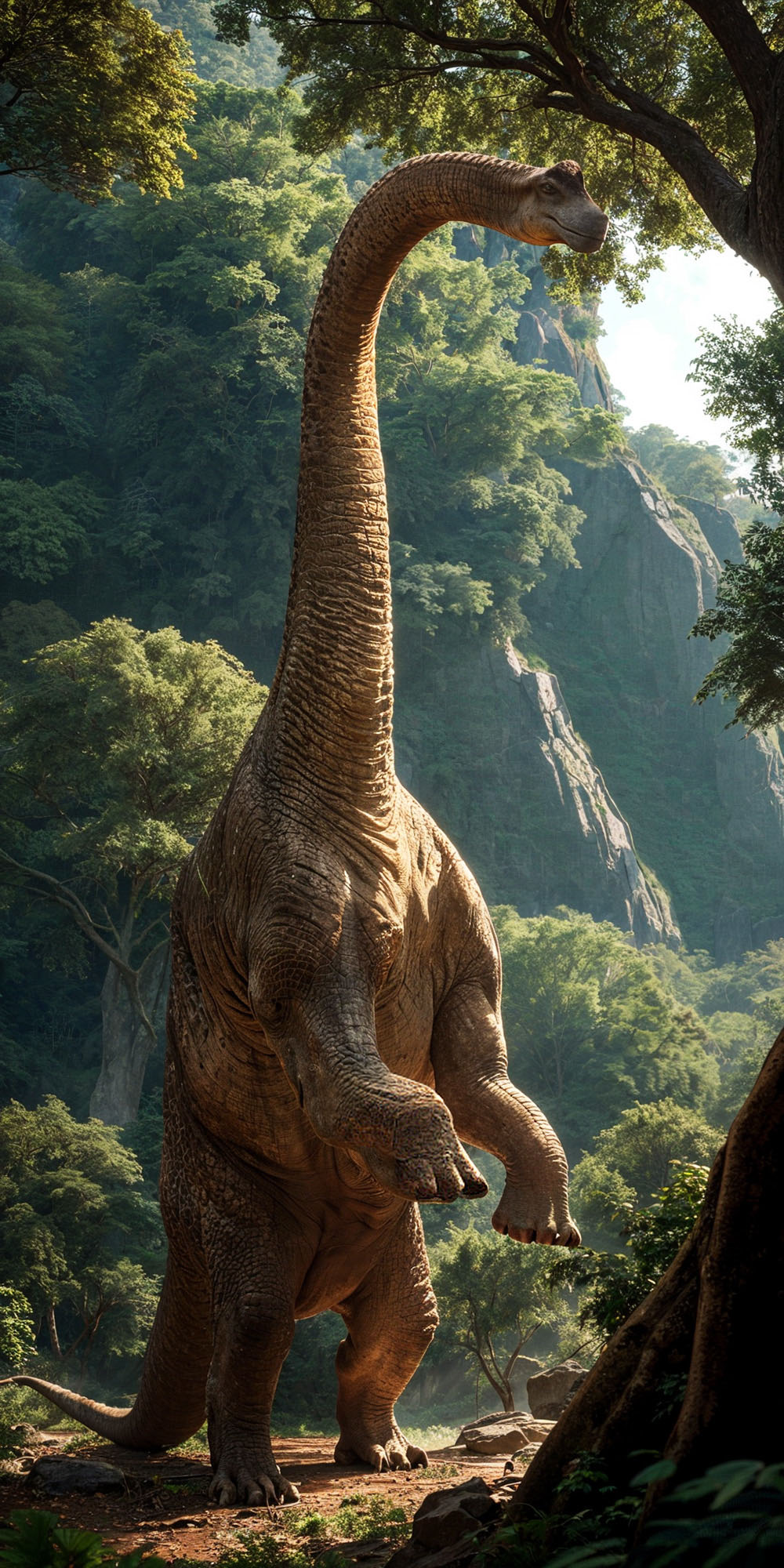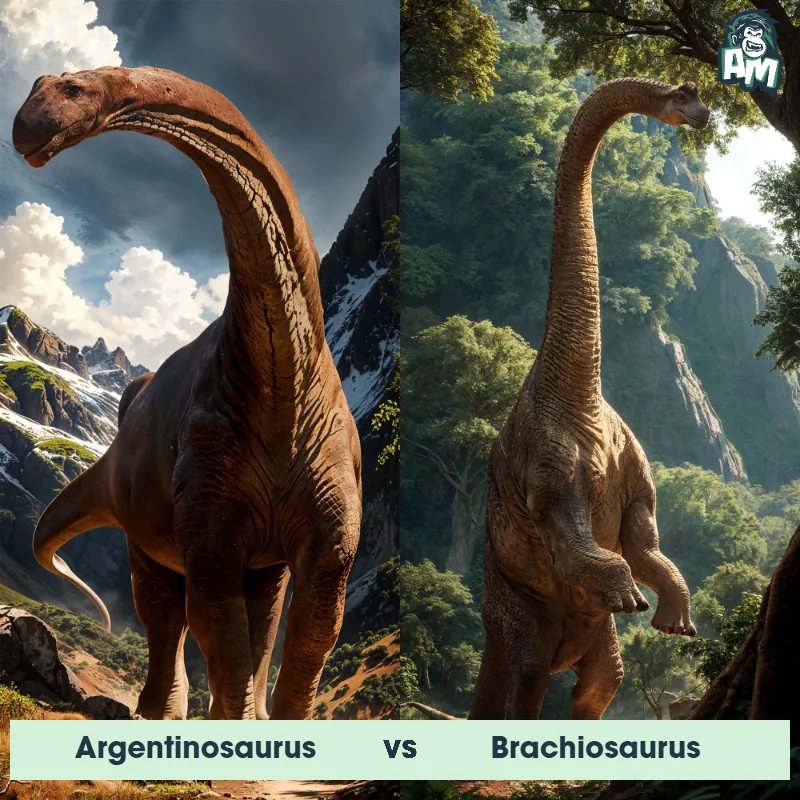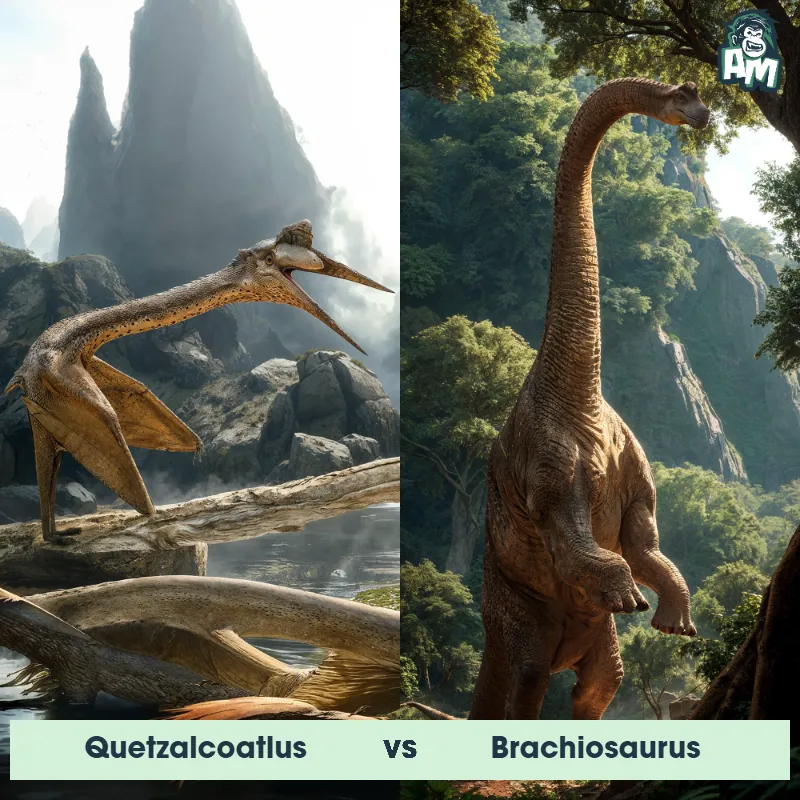The Brachiosaurus
The Brachiosaurus was a massive sauropod dinosaur known for its long neck and four pillar-like legs, making it one of the largest land animals to have ever existed. It had a small head with nostrils located on the top of its skull, allowing it to breathe while submerged in water. Brachiosaurus had a unique thumb spike on each forelimb and sharp teeth for stripping vegetation.

| Brachiosaurus | |
|---|---|
| Size | Up to 85 feet long (25.9 meters) |
| Weight | Up to 50 tons (45,359 kilograms) |
| Speed | 12-14 mph (19-23 km/h) |
| Key Strength | Long neck for intimidation |
| Biggest Weakness | Vulnerable hind legs |
| Scientific Name | Brachiosaurus |
| Family | Brachiosauridae |
| Habitat | Land |
| Geography | North America, Africa |
| Diet | Herbivorous |
| Lifespan | 20 years - 30 years |

The Brachiosaurus
The Brachiosaurus was a massive sauropod dinosaur known for its long neck and four pillar-like legs, making it one of the largest land animals to have ever existed. It had a small head with nostrils located on the top of its skull, allowing it to breathe while submerged in water. Brachiosaurus had a unique thumb spike on each forelimb and sharp teeth for stripping vegetation.
Fun Fact: Brachiosaurus is believed to have spent much of its time feeding on vegetation high above the ground, thanks to its long neck that could reach up to 30 feet in length.
| Brachiosaurus | |
|---|---|
| Size | Up to 85 feet long (25.9 meters) |
| Weight | Up to 50 tons (45,359 kilograms) |
| Speed | 12-14 mph (19-23 km/h) |
| Key Strength | Long neck for intimidation |
| Biggest Weakness | Vulnerable hind legs |
| Scientific Name | Brachiosaurus |
| Family | Brachiosauridae |
| Habitat | Land |
| Geography | North America, Africa |
| Diet | Herbivorous |
| Lifespan | 20 years - 30 years |
Brachiosaurus Matchups
We use AI to simulate matchups between the Brachiosaurus and other animals. Our simulation considers size, strength, and natural predatory behaviors to determine the most likely outcome.

Can't find the Matchup you want?
Create Your Own MatchupBrachiosaurus: Diet, Predators, Aggression, and Defensive Behaviors
What did Brachiosaurus eat?
Brachiosaurus were herbivores, meaning they primarily ate plants. They would feed on vegetation such as ferns, cycads, and conifers that were available during the Late Jurassic period. Due to their massive size, Brachiosaurus had to consume large amounts of vegetation to sustain their bodies.
Did Brachiosaurus have any predators?
As one of the largest dinosaurs to have ever existed, Brachiosaurus did not have many natural predators. However, they may have been hunted by large theropods such as Allosaurus, who were capable of taking down even the largest of prey. Nonetheless, Brachiosaurus likely had few predators due to their size and strength.
Were Brachiosaurus aggressive?
Brachiosaurus were believed to be relatively peaceful herbivores and did not display aggressive behaviors towards others. They were more focused on feeding and surviving rather than engaging in aggressive interactions with other dinosaurs.
Did Brachiosaurus fight?
Brachiosaurus were not known to engage in fights with other dinosaurs. With their long necks and tails, it is likely that they used these features for communication, display, or possibly even for defense rather than physical combat.
How did Brachiosaurus defend themselves?
Due to their massive size and strength, Brachiosaurus likely relied on their sheer bulk as a defense mechanism against potential threats. Their long necks and tails may have also been used to deter predators by swinging or intimidating them.
What was Brachiosaurus' biggest weakness in a fight?
Despite their size and strength, one potential weakness of Brachiosaurus in a fight could be their relatively slow movement. Their massive bodies required a lot of energy to sustain, and they may not have been able to move quickly or evade predators easily in a confrontation. This lack of agility could have posed a challenge in a fight against faster or more agile predators.
Fun Fact: Despite its enormous size, Brachiosaurus was capable of walking on both land and swimming in bodies of water, due to its adaptation for buoyancy allowing it to be partially underwater while feeding.
Fun Fact: Paleontologists estimate that Brachiosaurus could have weighed as much as 80 tons, making it one of the heaviest dinosaurs to have ever roamed the Earth.












